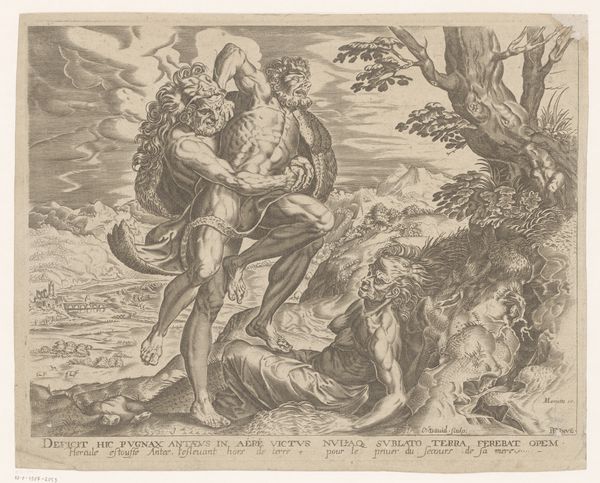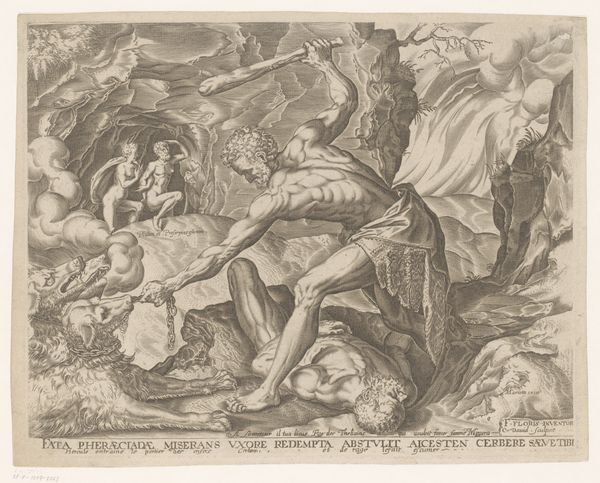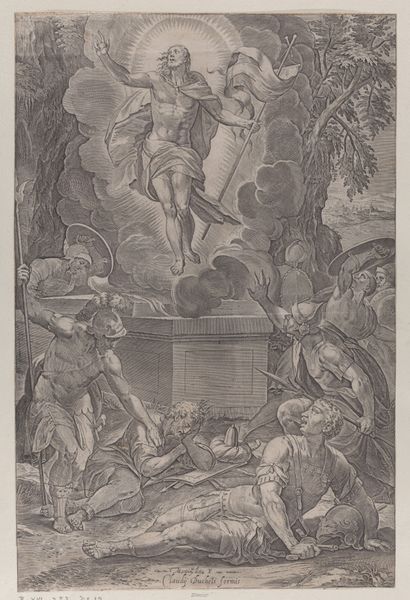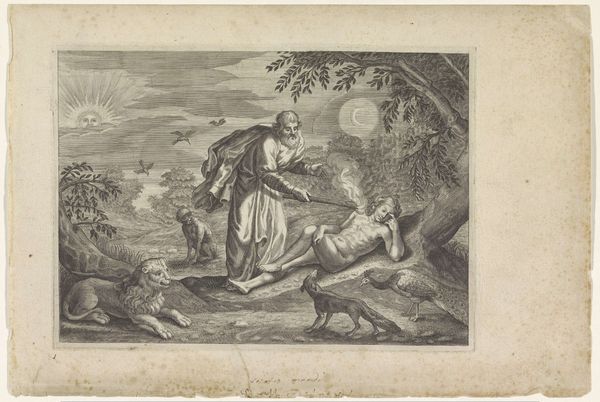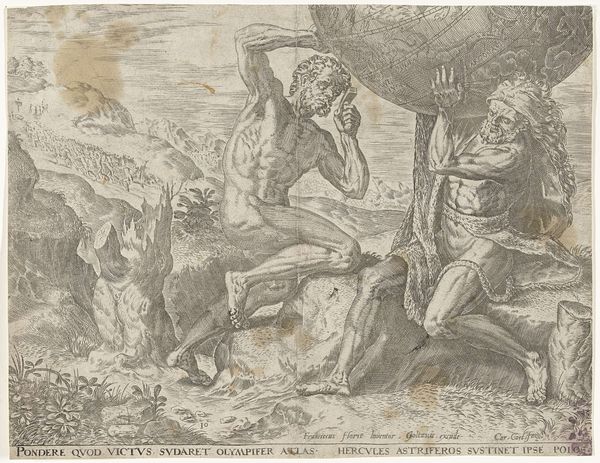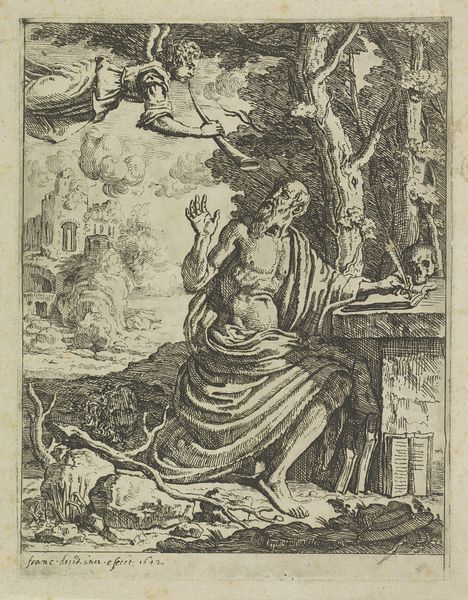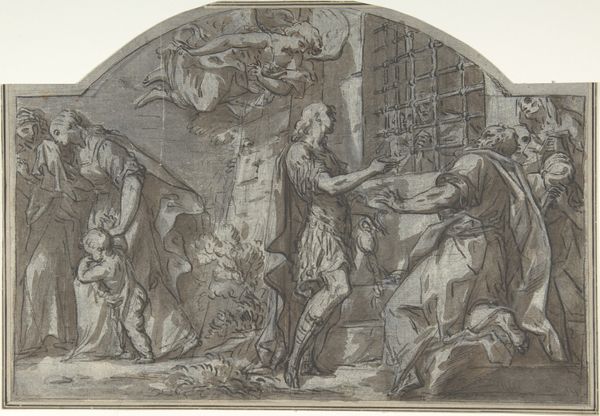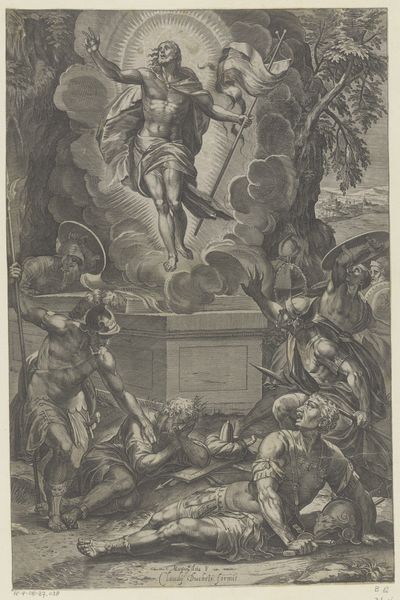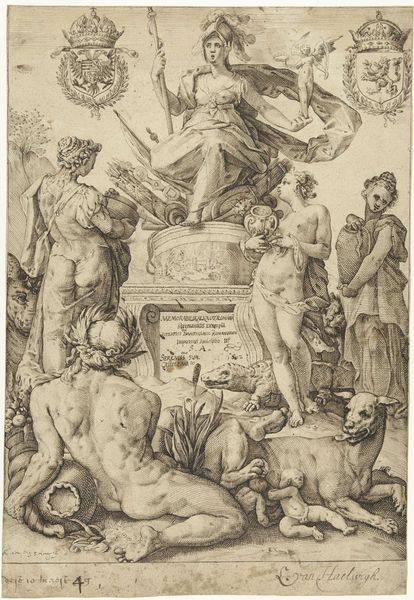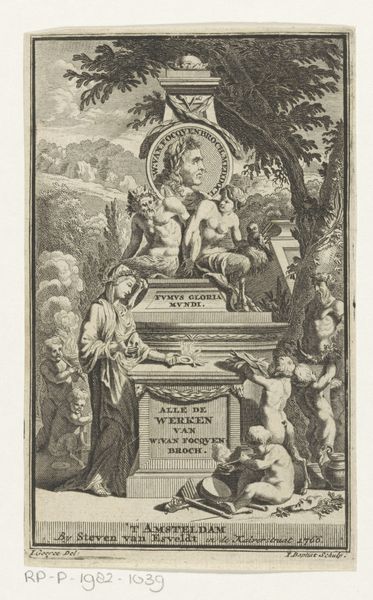
The Sacrifice of Isaac set in a landscape with a flock of sheep at left and an angel guiding Abraham's sword at upper left 1570 - 1615
0:00
0:00
drawing, print, engraving
#
drawing
#
baroque
# print
#
landscape
#
figuration
#
history-painting
#
engraving
#
angel
Dimensions: Sheet: 7 1/8 × 8 3/4 in. (18.1 × 22.3 cm)
Copyright: Public Domain
Curator: This engraving presents "The Sacrifice of Isaac set in a landscape with a flock of sheep at left and an angel guiding Abraham's sword at upper left," dating from 1570 to 1615 and attributed to Cherubino Alberti. It's now held in the collection of the Metropolitan Museum of Art. Editor: The drama jumps out. It's a stark scene rendered in such clear detail. The high contrast in the engraving emphasizes Abraham's tense stance, almost frozen in the act, while the landscape adds a layer of foreboding. Curator: Indeed. The composition relies heavily on the interplay between light and shadow, a characteristic of Baroque aesthetics. The stark linearity in the depiction of the figures and the landscape elements create a sense of dynamism, highlighting the tension inherent in the biblical narrative. The angel, intervening with graceful urgency, counteracts the violence with divine presence. Editor: I'm struck by the level of craftsmanship. The meticulous cross-hatching suggests the labour involved in producing this image as a multiple, an act of devotional duplication accessible through printed means. The material realities—the copperplate, the ink, the printing press—enabled the dissemination of religious narratives like this to a wider audience. Curator: Precisely. But also consider Alberti’s conscious manipulation of form. Observe how the figures are rendered, Isaac’s desperate posture as a foil to Abraham's unwavering obedience. The landscape is more than backdrop; it's an active participant, reflecting the emotional weight of the event. The semiotics of sacrifice are here, the landscape witnesses both intended violence and divine redemption. Editor: Right, and I'm thinking about what it means to reproduce and circulate such powerful stories. How does this kind of image making serve both to monumentalize devotion while at the same time implicating larger systems of belief? This piece offers a lens through which to look at labor, religious culture and print circulation within specific workshops of the time. Curator: Excellent points, highlighting how visual elements and broader cultural significance intertwine. It’s fascinating to examine both the intricate formalism and how production values meet historical contexts. Editor: A great example of how to appreciate the convergence of aesthetic skill and larger frameworks of meaning embedded in making practices of the 16th century.
Comments
No comments
Be the first to comment and join the conversation on the ultimate creative platform.
